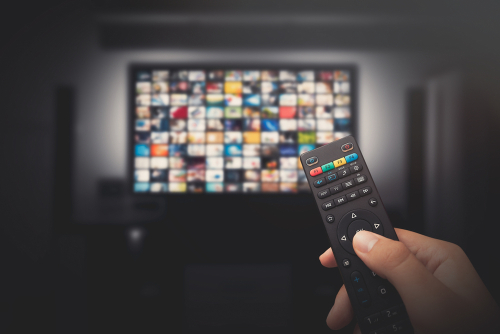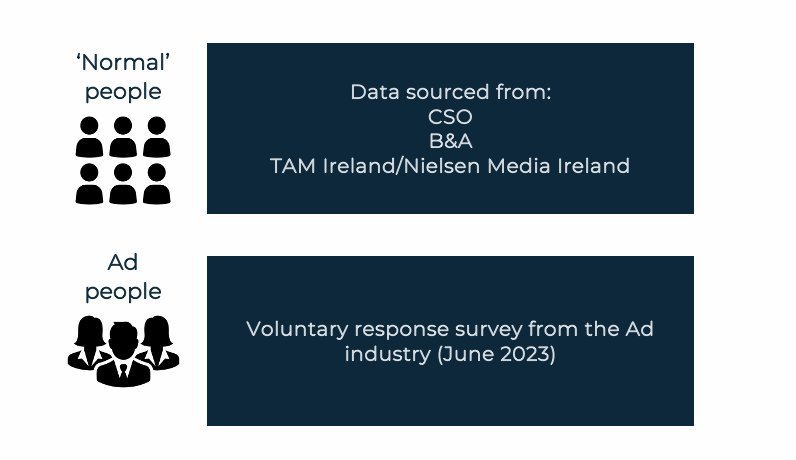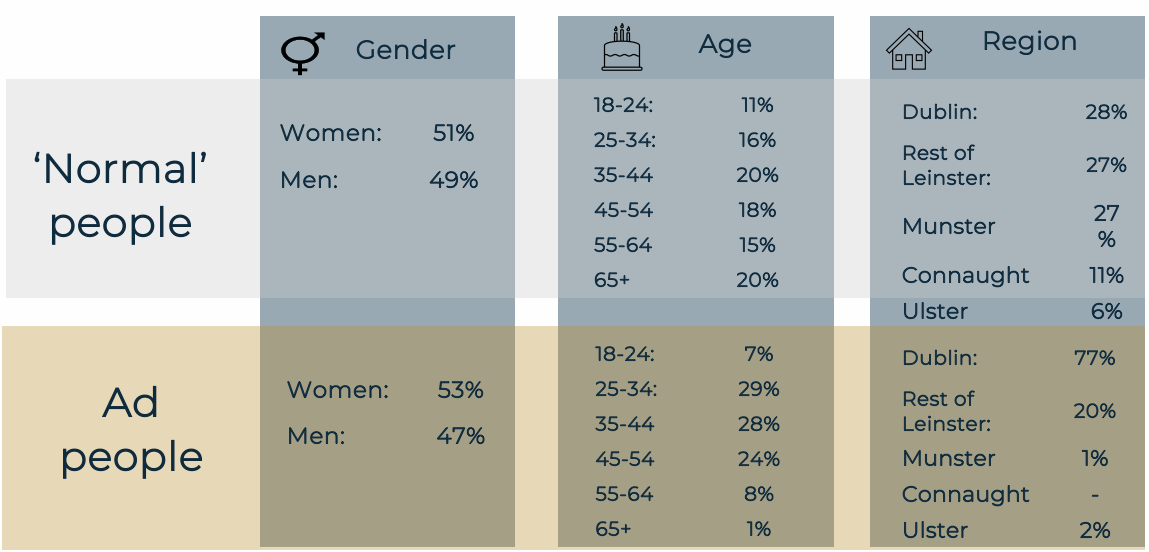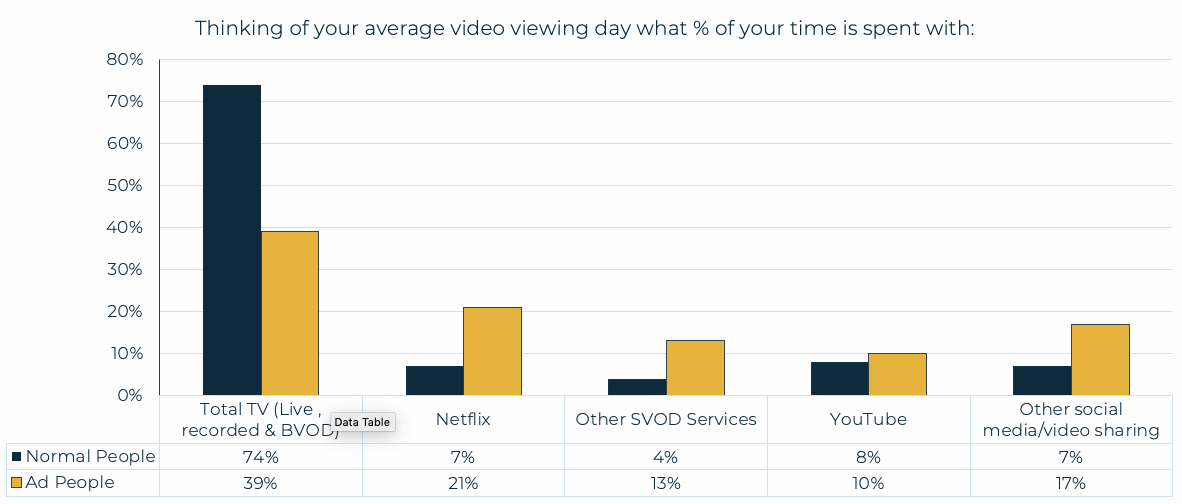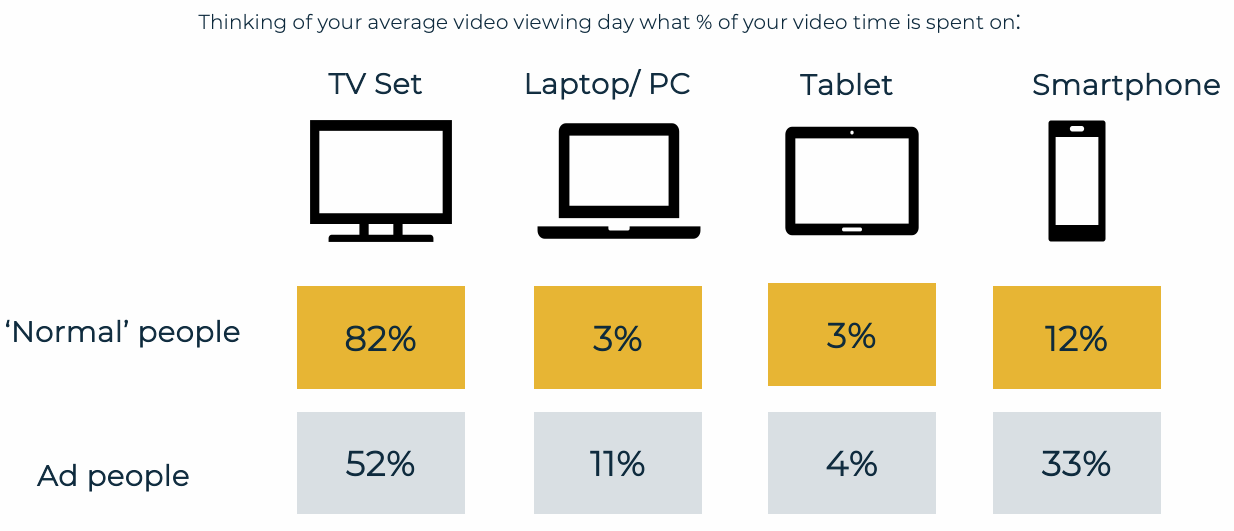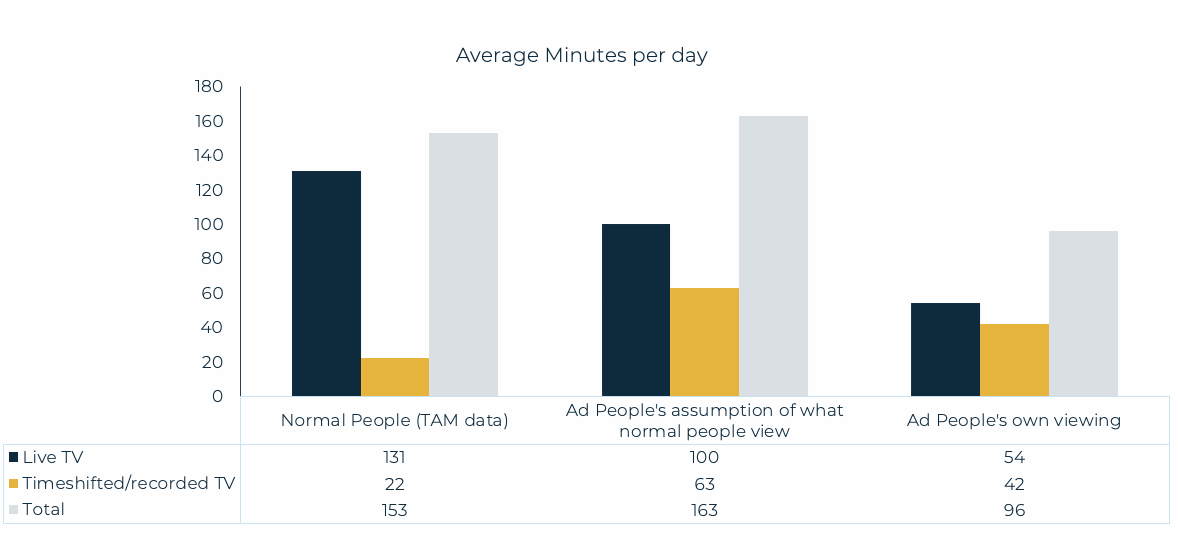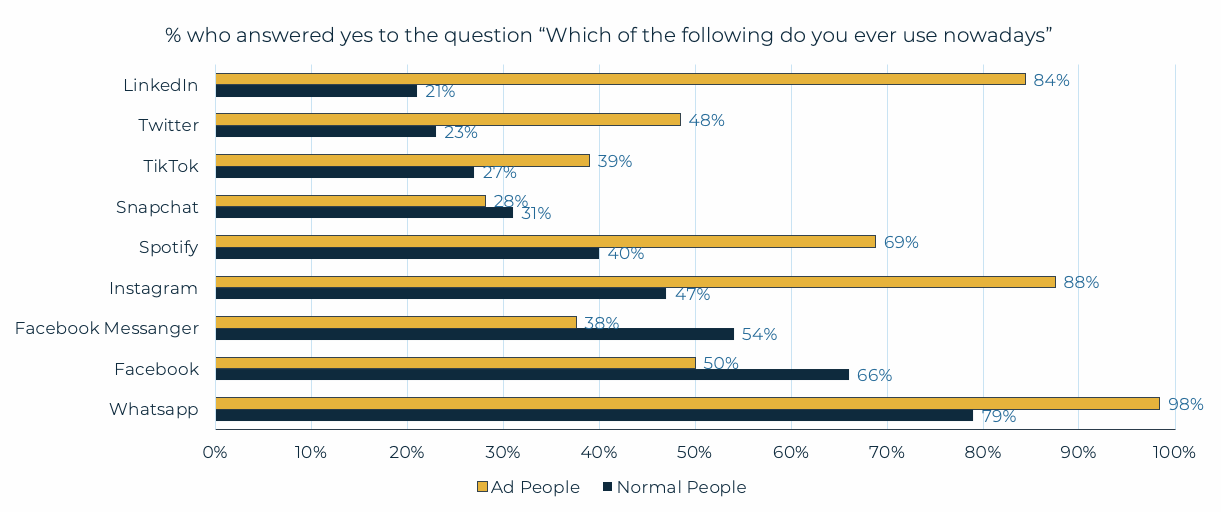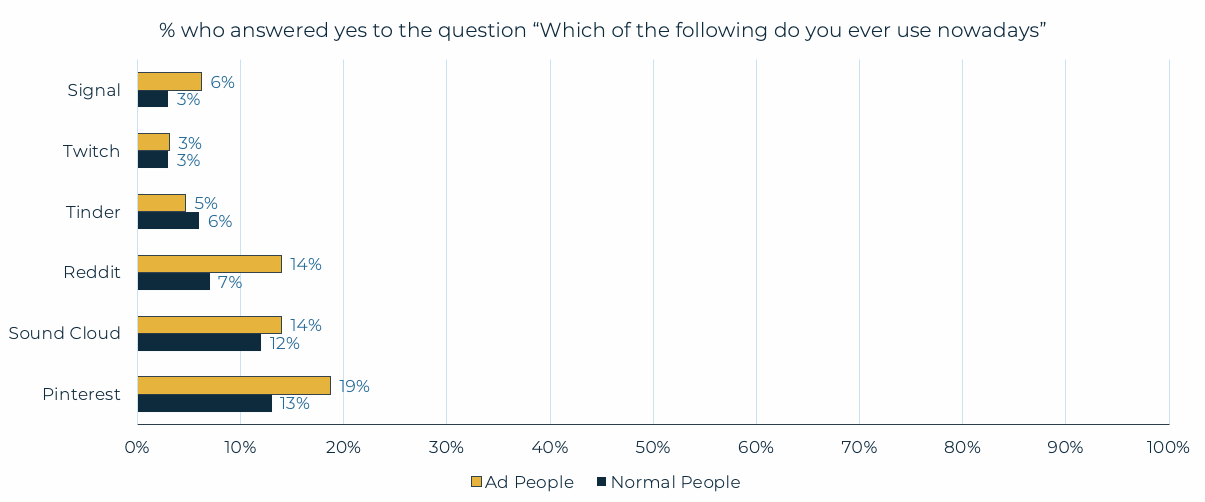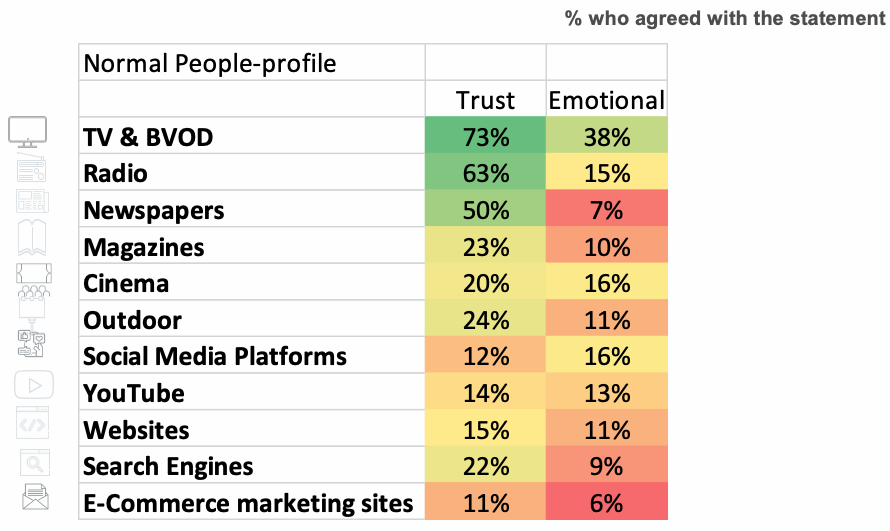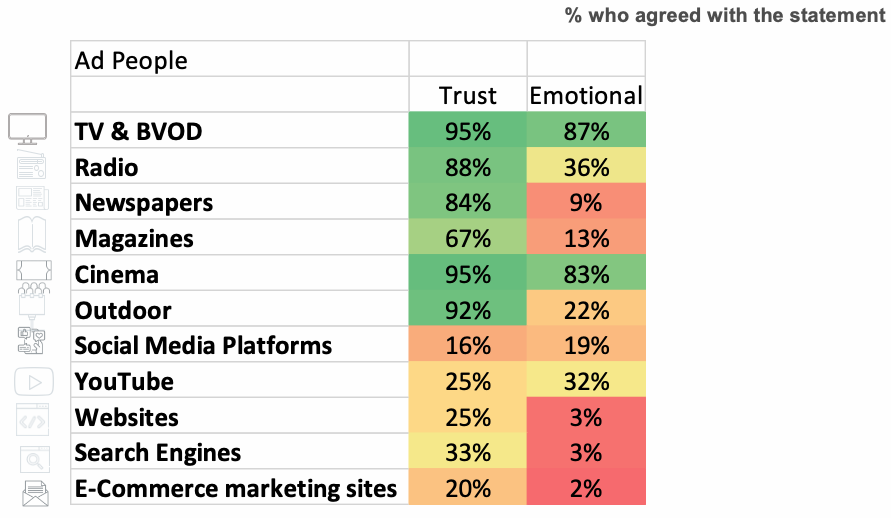People working in advertising have completely different media consumption habits to normal people, something which the industry should be mindful of at all times, writes Eimear Keane.
Differences between the ad industry and the general public is an ongoing topic of conversation. Understanding your audiences is the golden rule within marketing and ensuring that their behaviour is accurately reflected is key.
At TAM Ireland, we’ve previously explored this area, having published our Adland V TVland studies in 2018 and 2021, that looked at the differences in media consumption between those who work in media and the average person in Ireland.
Similarly, there have been a number of other international ad industry studies, including Thinkboxes Ad Nation studies Newsworks’ ‘Sample of one’ and Reach Solutions ‘The Empathy Delusion.’
Much like our project, these studies sought to have a positive impact on media professionals ability to better estimate the media consumption patterns of the general population versus those working in Advertising
Since our last study back in 2021 there has been even more change to the media landscape. BVOD consumption is growing alongside the rise of subscription streaming services. The way people consume video content is constantly evolving and changing.
We wanted to update our last study to see if the difference between the media consumption habits of the Irish public and media professionals changed.
We look at two different groups in this study
Gender Split
The gender split in both samples is relatively equal, with Adland having a slightly larger proportion of women.
An age old issue
Our data confirms that the cliché that “advertising is a young person’s game” is more than just a lazy stereotype. Only 33% of those in working in adland are over 45, compared with 53% of the general population.
Dublin Focused
Despite increases in people working from home and flexible working arrangements, 77% of Adland still live in Dublin-this is compared to 28% of the general population.
Viewing Habits
The video viewing habits of “normal” people differ widely to those of ad people
Broadcast TV services are the most accessed service by ‘normal’ people. From the TAM Ireland Total Video Panel, we can see that for “normal people” 74% of their video viewing day is with Total TV (Live, recorded and BVOD), massively ahead of Netflix (7%) and YouTube (8%).
When we delve into the consumption of Ad people their video consumption is more evenly split. They spend 39% of their video viewing day with Total TV-far below what “Normal People” spend.
Device usage also differs between the two groups
Ad people claimed that over half of their time of 1 hour 36 minutes a day (56%) spent watching TV was spent watching Live TV. The same question was asked to the sample to predict the behaviour of ‘normal’ people. Ad people predicted that normal people watch TV for a lot longer each day (2 hours 43 minutes) with Live TV accounting for a larger % share (61%) of a normal persons viewing day.
Ad People tend to have a much higher use of social media
With ad people having a higher consumption of streaming services, a similar trend was seen in social media.
With ad people having a higher consumption of streaming services, a similar trend was seen in social media. Looking at platforms used Facebook and Whatsapp were the most popular services for ‘normal people’.
However, when compared with ad people, a different story emerges. With Instagram much more popular amongst ad people than normal people. Unsurprisingly, LinkedIn is a hugely popular platform for ad People-4 times more popular amongst ad people than normal people! Ad people consistently had larger usage of social media platforms apart from Facebook which is used more by normal people than ad people.
Ad People tend to have a much higher use of social media –even across more niche sites
Even amongst the smaller more niche social media sites Ad People have a higher usage than Normal people (except for Tinder which normal people use more than adpeople!)
Even amongst the smaller more niche social media sites Ad People have a higher usage than Normal people (except for Tinder which normal people use more than Ad people!)
Attitudes to Advertising
As we all know there is a wealth of effectiveness data out there that shows how advertising that elicits an emotional response creates a lasting impact. We looked at normal people and their attitudes to advertising to see what channels generated particular outcomes.
When asked what channel they were most likely to find advertising that makes them feel emotional and advertising that they trust, the vast majority of ‘normal’ people selected TV, with over 73% agreeing that they find ads that they trust on TV and 38% claiming that TV ads have the ability to make them feel emotional. Cinema and radio and outdoor also appeared at the top of the list for trust however when looking at how the different media channels performed against the other attributes, TV outperformed all other media.
But how does this compare with ad people’s attitudes to advertising?
Where do “Ad People” find advertising that they trust and makes them feel emotional.
Looking at all the media channels for both trust and emotion TV is the leading medium for both. Like ‘normal’ people, ad people also selected radio and newspapers as places to find trustworthy advertisements but cinema and outdoor scored higher with them.
When asked about where they were most likely to find advertising that made them feel emotional, TV was also the leading medium for ad people. Interestingly, both groups were also aligned with their selection of media channels, including radio, social media and cinema as places you are most likely to find emotional advertising.
Eimear Keane is head of marketing with TAM Ireland. For more information visit www.tamireland.ie
















